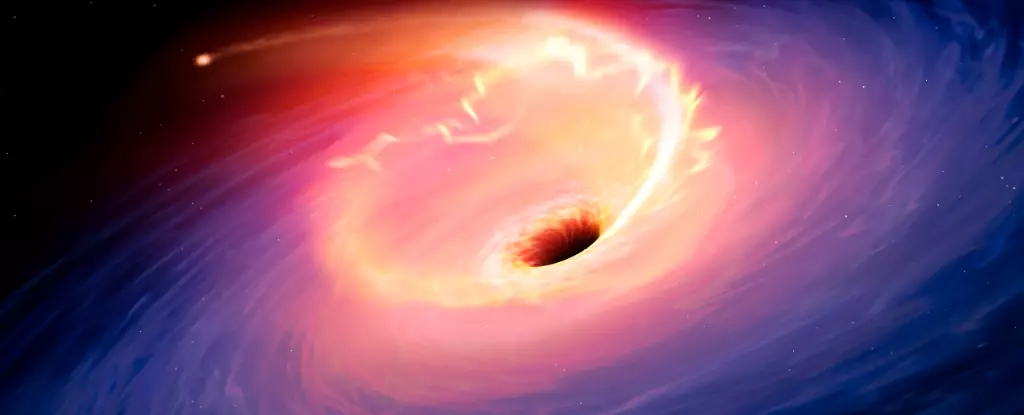Black holes have long been known for their destructive nature, especially when it comes to stars that get too close to them. These cosmic monsters often rip apart stars in a dramatic fashion when they pass the event horizon. However, in some rare cases, stars manage to survive in orbit around the black hole, resulting in a slow and painful demise. A recent study using data from X-ray observations sheds light on a supermassive black hole in a distant galaxy that is gradually consuming a captured star, providing valuable insights into various physical processes.
The Discovery of AT2018fyk
The journey of unraveling this cosmic phenomenon began with the detection of AT2018fyk, classified as a “tidal disruption event” (TDE), in 2018. Initially observed by NASA’s Neutron star Interior Composition Explorer (NICER), follow-up investigations were conducted using Chandra and XMM-Newton, ESA’s X-ray telescope. This TDE involved a star being devoured by the black hole, emitting intense X-ray and UV radiation that reached us from a staggering distance of 860 million light-years away.
What made this particular event even more intriguing was the unexpected resurgence of X-ray and UV emissions from the black hole two years after the initial detection. Scientists theorized that the star, captured in a highly elliptical orbit, had been partially devoured once again, leading to another TDE. By closely monitoring the system, researchers predicted the end of this cycle in August 2023, prompting additional observations with Chandra. True to their calculations, a significant decrease in emissions was observed on August 14th, 2023, indicating either the complete destruction of the star or its miraculous escape from the black hole’s grasp to continue its celestial dance.
The Fate of the Star
As each successive event results in a decrease in luminosity, it is speculated that the star is losing mass with each encounter. Intriguingly, the researchers suspect that the star was originally part of a binary system, with its companion star being ejected when they approached the black hole. While the fate of the surviving star remains uncertain, calculations suggest a potential third luminous event between May and August of 2025, lasting longer than previous episodes. The system’s evolution not only poses fascinating questions about TDEs but also offers a unique opportunity to test theoretical predictions.
The ongoing saga of AT2018fyk has captivated the scientific community, prompting further investigations and the anticipation of additional observational opportunities in the coming years. With the potential for another luminous outburst on the horizon, researchers are eager to delve deeper into the mysteries surrounding this enthralling black hole-star interaction. The system serves as a testament to the dynamic and volatile nature of the cosmos, providing valuable insights into the forces that govern celestial bodies on an astronomical scale.


Leave a Reply